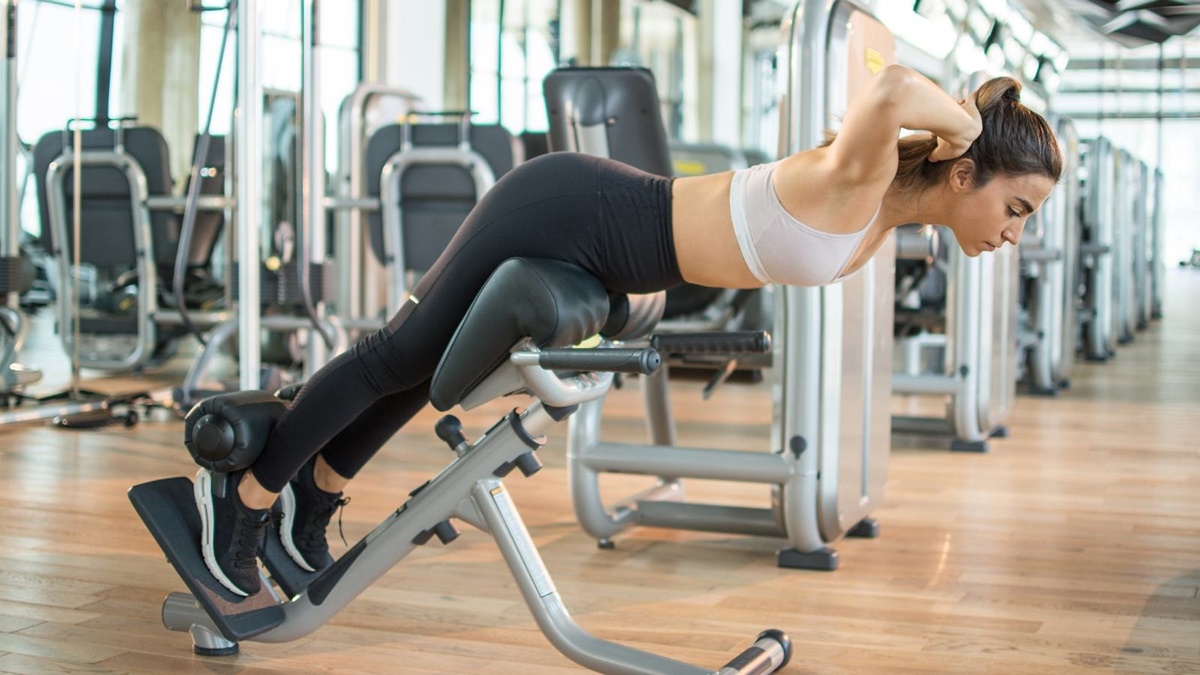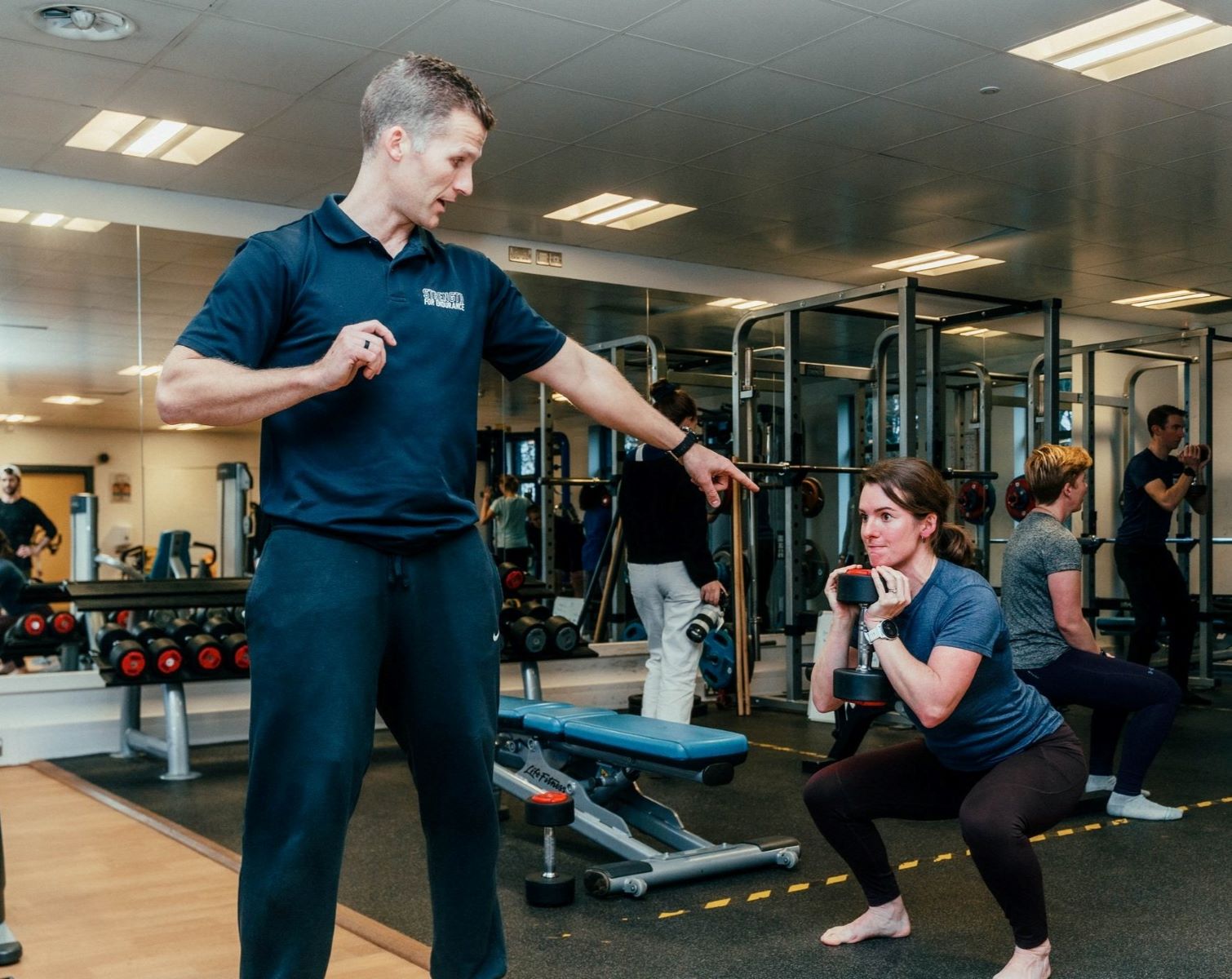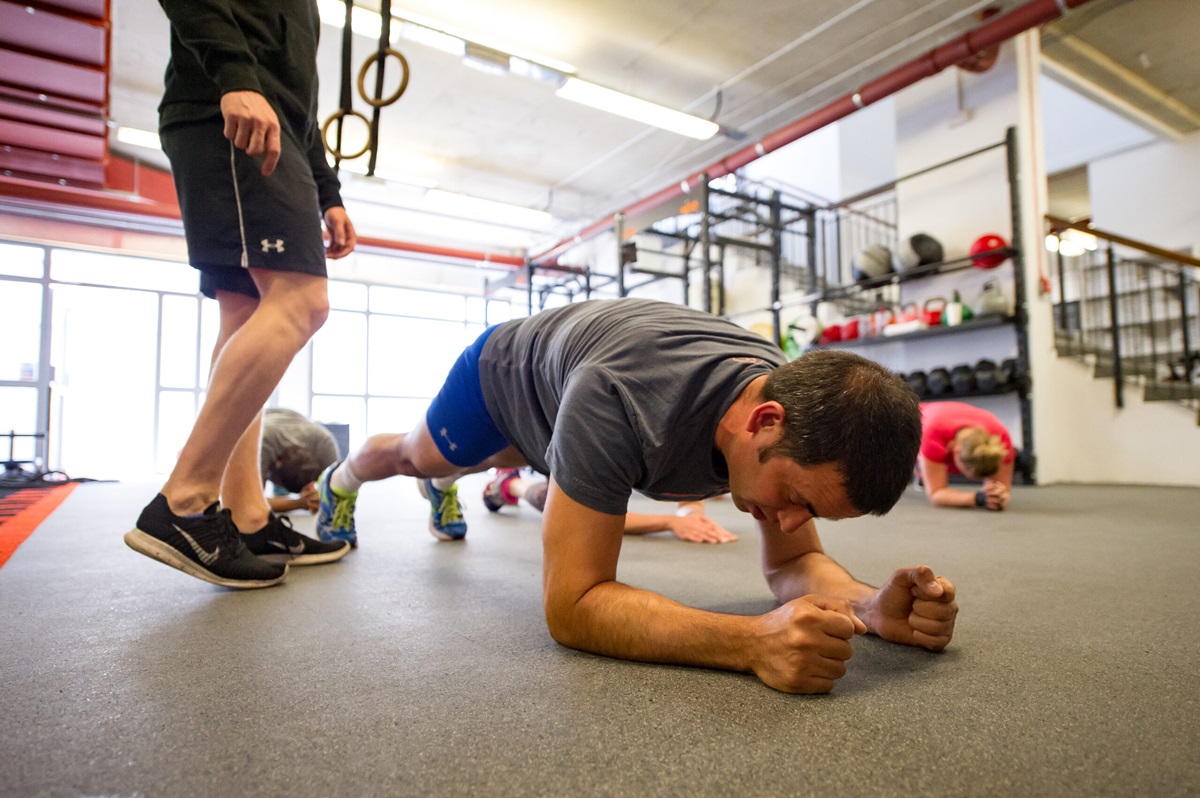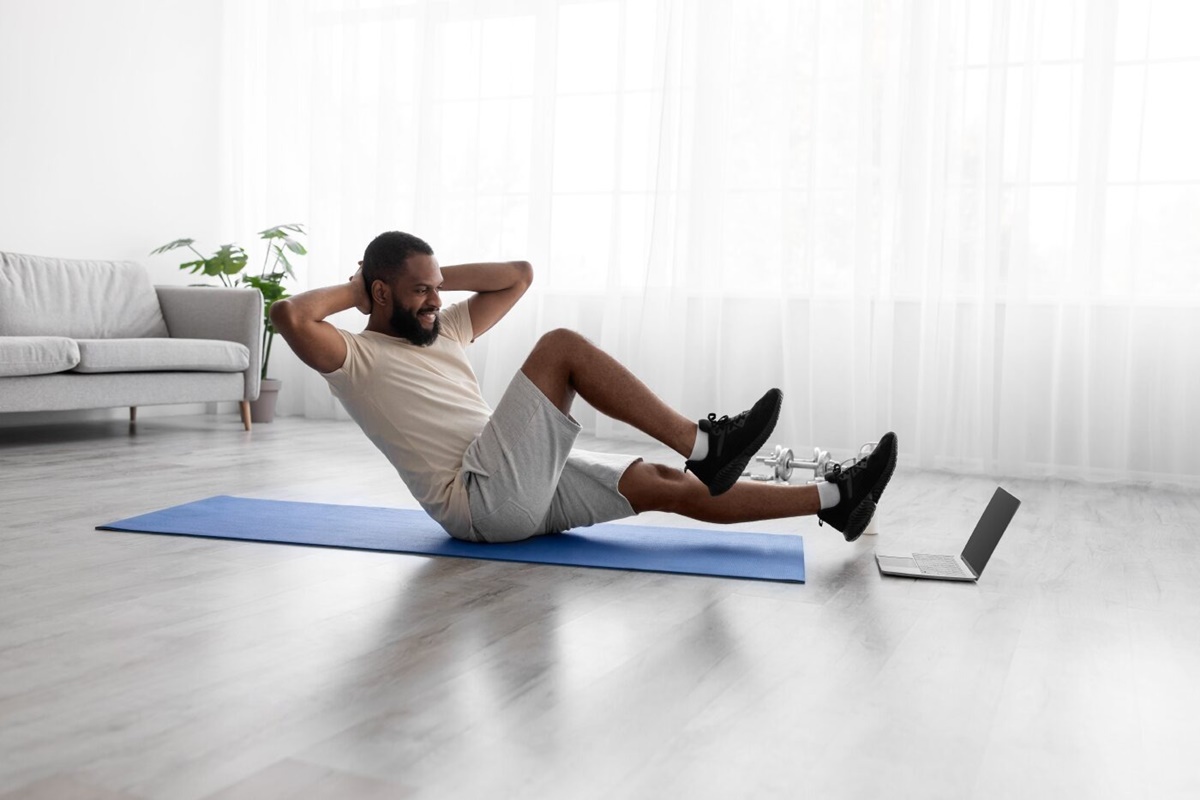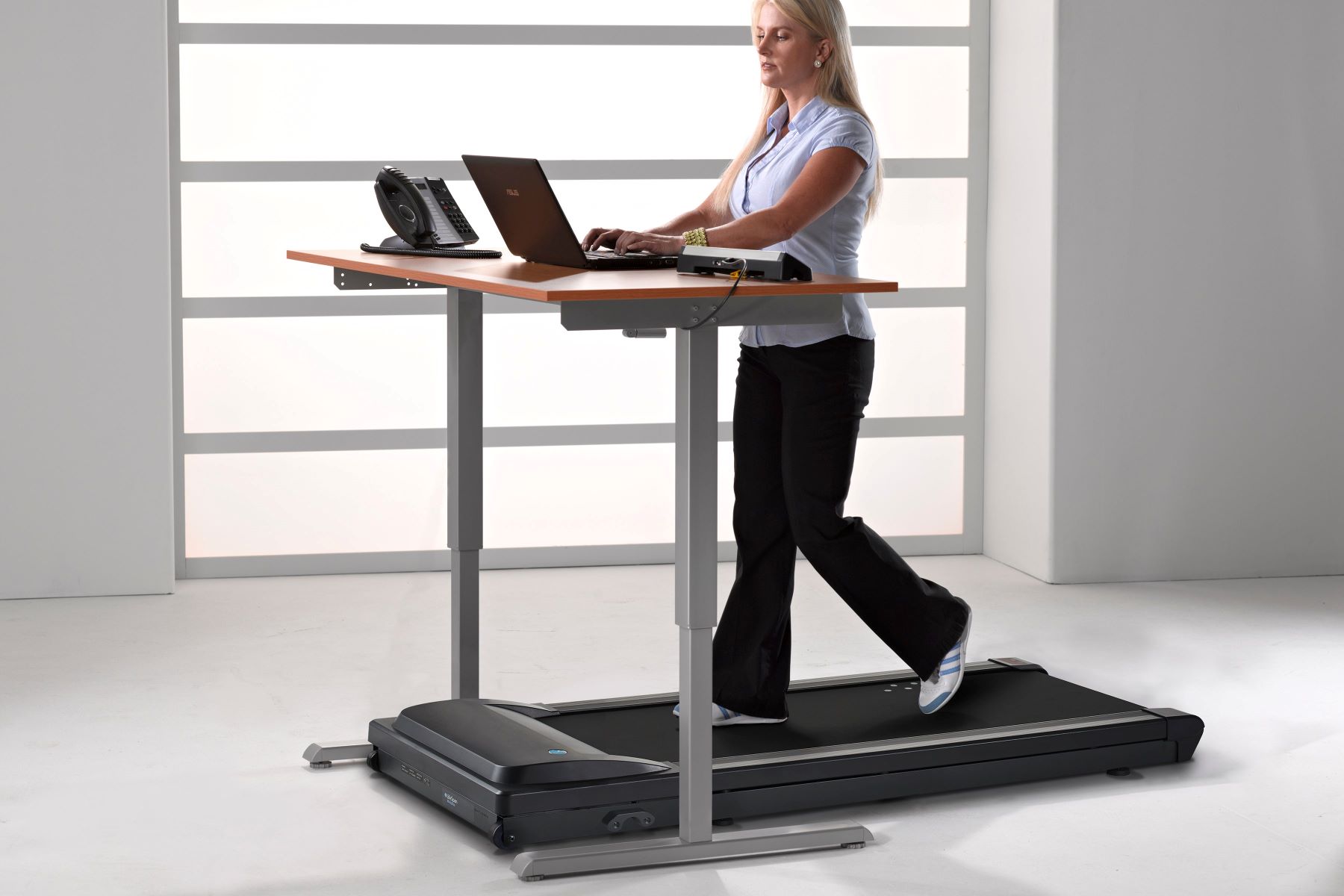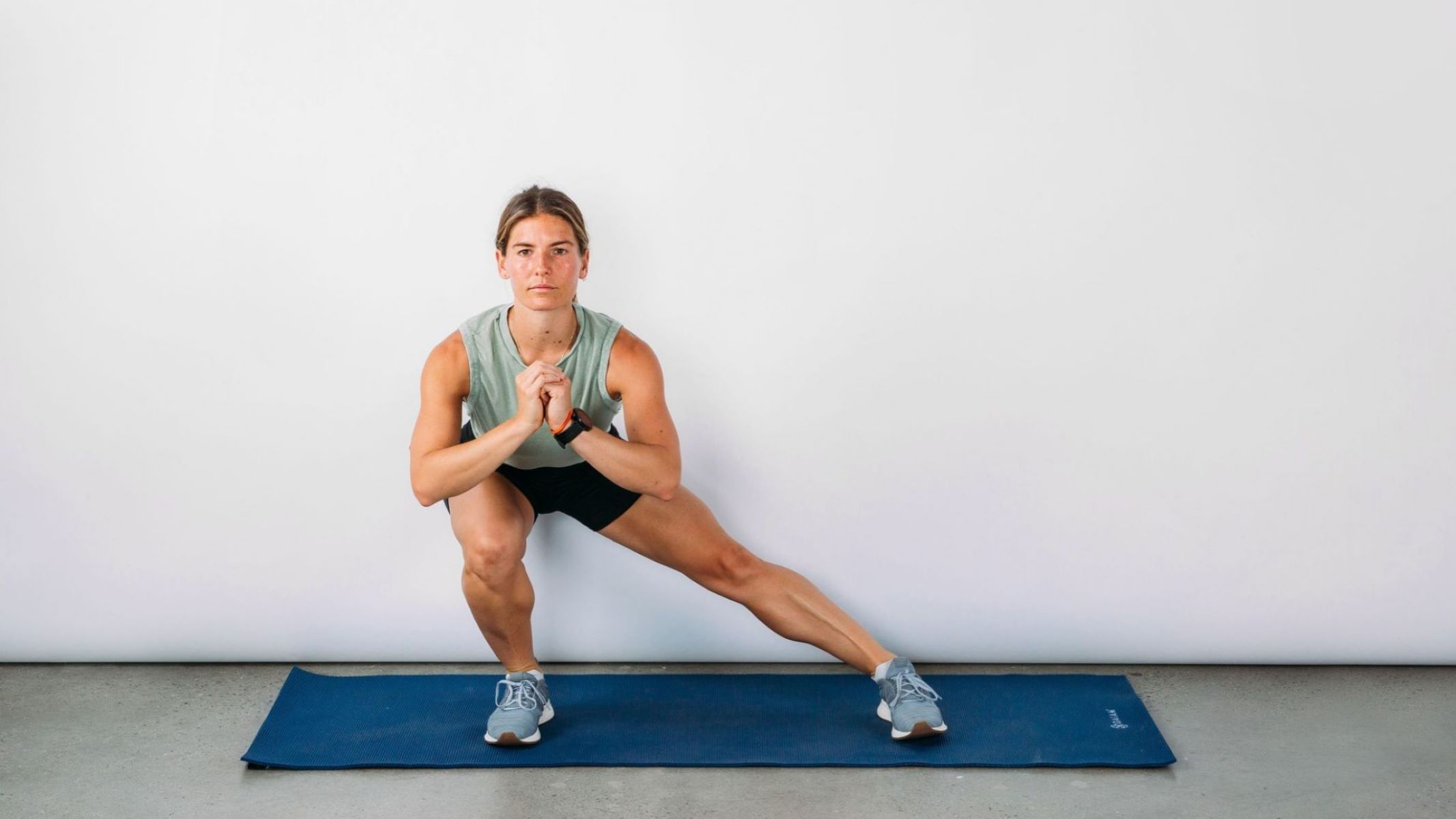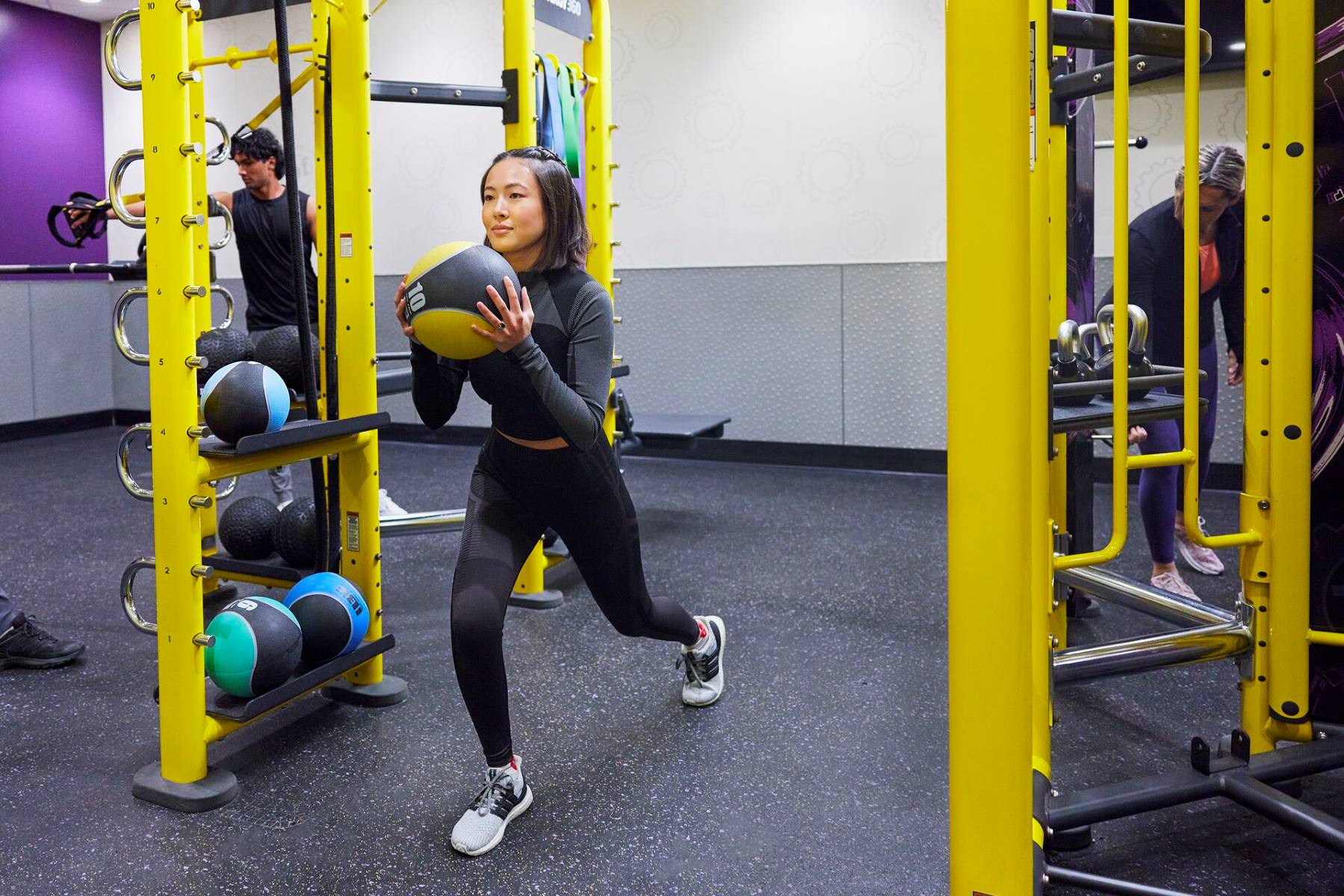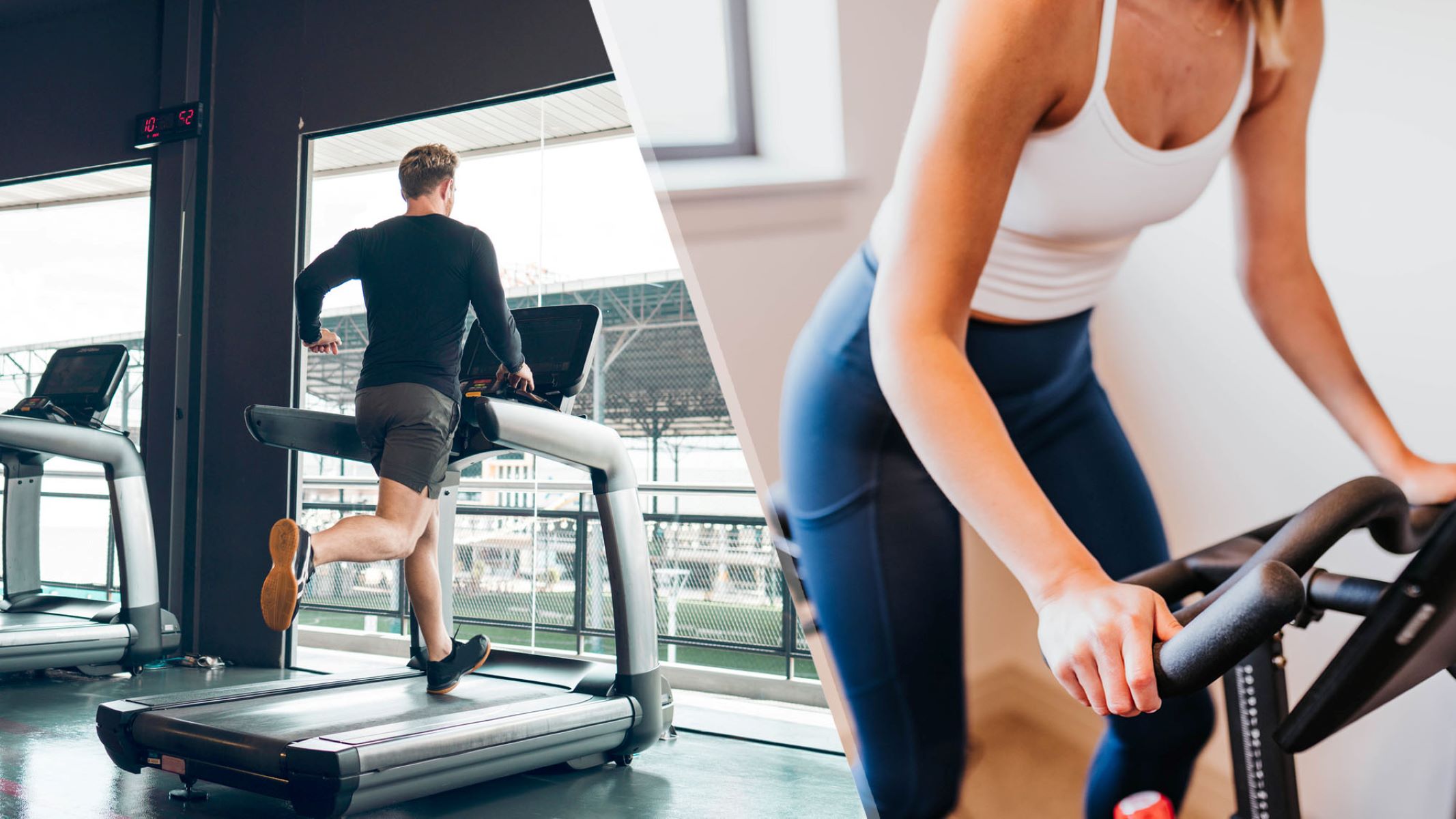

Featured
Which Is Better Bike Or Treadmill
Modified: January 2, 2024
Discover which is better for your fitness routine: a bike or a treadmill. Read about the featured benefits of each and make an informed decision for your workouts.
Introduction
When it comes to choosing the right exercise equipment for your fitness routine, there are countless options available. Among the most popular choices are bikes and treadmills, both of which provide excellent cardiovascular workouts. However, determining which one is better for you depends on various factors, including your fitness goals, personal preferences, and any physical limitations you may have.
In this article, we will compare bikes and treadmills across different aspects such as price, cardiovascular benefits, impact on joints, muscle engagement, convenience, weight loss potential, variety in workouts, mental and emotional benefits, and safety considerations. By examining these factors, you can make an informed decision about which equipment would best suit your needs and fitness goals.
It’s important to note that both bikes and treadmills have their unique advantages and are effective in their own ways. Therefore, it’s crucial to understand the specific benefits and drawbacks of each to ensure you choose the equipment that aligns best with your fitness goals and lifestyle.
So, without further ado, let’s dive into the comparison and discover the differences between bikes and treadmills, helping you determine which one is better for you.
Price Comparison
When it comes to purchasing exercise equipment, one of the primary factors to consider is the price. Bikes and treadmills come in a variety of models and price ranges, making it important to understand the cost implications before making a decision.
In general, bikes tend to be more affordable than treadmills. There are different types of bikes available, such as upright bikes, recumbent bikes, and spin bikes, each with its own price range. The basic models can be purchased for as little as $100, while more advanced models with features like adjustable resistance and digital displays can range from $200 to $1000.
Treadmills, on the other hand, tend to be more expensive compared to bikes. The price range for treadmills can vary significantly depending on the brand, features, and quality. Entry-level treadmills can start at around $300, while high-end models with advanced features like incline settings, heart rate monitors, and built-in workout programs can cost upwards of $3000.
It’s worth noting that there are also mid-range options available for both bikes and treadmills, offering a balance between features and price. Additionally, it’s possible to find used bikes and treadmills at lower prices, which can be a cost-effective option for those on a tighter budget.
Ultimately, the price comparison between bikes and treadmills depends on your budget and the features you require. If you’re looking for a more cost-effective option, bikes tend to be the better choice. However, if you’re willing to invest in more advanced features and technology, treadmills offer a wider range of options.
Before making a purchase, it’s important to consider not only the initial cost but also the long-term maintenance and potential expenses, such as replacement parts or service fees. Additionally, it’s worth exploring different brands and models to find the best value for your money, ensuring that the equipment you choose meets your specific fitness needs.
Cardiovascular Benefits
Both bikes and treadmills are excellent options for improving cardiovascular health and stamina. Engaging in regular aerobic exercise is essential for maintaining a healthy heart and reducing the risk of cardiovascular diseases.
When it comes to cardiovascular benefits, both bikes and treadmills offer similar advantages. Both forms of exercise can elevate your heart rate, increase blood circulation, and improve lung capacity. This leads to improved cardiovascular endurance over time.
However, there are a few key differences to consider. Bikes are low-impact exercise machines, meaning they put less stress on your joints and minimize the risk of injury. This makes them an ideal option for individuals with joint issues or those recovering from an injury. The cycling motion provides a smooth and continuous workout that doesn’t place excessive strain on the knees, hips, or ankles.
Treadmills, on the other hand, offer a weight-bearing exercise that can help improve bone density. The impact of walking or running on a treadmill stimulates bone growth and can be beneficial for individuals aiming to prevent osteoporosis or maintain healthy bones. Additionally, treadmill workouts allow for more versatility in terms of speed, incline, and intensity levels, enabling you to customize your cardio routine to suit your fitness goals.
Ultimately, the choice between a bike and a treadmill for cardiovascular benefits depends on personal preferences, existing injuries or conditions, and the level of impact you are comfortable with. If joint impact is a concern, a bike may be the better option. Alternatively, if you need a more diverse range of workout possibilities and the benefits of weight-bearing exercises, a treadmill might be the ideal choice.
It’s important to note that regardless of which equipment you choose, consistency and proper technique are vital for maximizing the cardiovascular benefits. Aim for at least 150 minutes of moderate-intensity aerobic exercise per week, or 75 minutes of vigorous-intensity exercise, spread throughout the week for optimal results.
Impact on Joints
When considering exercise equipment, the impact on joints is an important factor to consider, especially for individuals with joint-related issues or injuries. Understanding the impact that bikes and treadmills have on your joints can help you make an informed decision about which equipment is better suited for your needs.
Bikes are generally considered to have a lower impact on joints compared to treadmills. The pedaling motion of a bike is smooth and non-weight bearing, which reduces stress on the joints, particularly the knees, hips, and ankles. This makes bikes an excellent choice for individuals with conditions such as arthritis or those recovering from joint injuries. The low-impact nature of biking allows for a more comfortable workout experience, minimizing the risk of aggravating joint pain or causing further injury.
Treadmills, on the other hand, are considered to have a higher impact on joints, especially for running. The repeated striking of your feet against the moving belt can put stress on your knees and other weight-bearing joints. However, modern treadmills often feature shock absorption systems that help reduce the impact on joints, making them more joint-friendly compared to running outdoors on hard surfaces.
If joint impact is a concern for you, there are options available to minimize the impact when using a treadmill. Many treadmills have adjustable cushioning systems that allow you to customize the level of shock absorption, providing a more comfortable and joint-friendly workout. Additionally, starting with walking instead of running on the treadmill can help reduce joint impact.
Ultimately, the impact on joints is subjective and may vary depending on your current joint health, fitness level, and exercise technique. It’s important to listen to your body and adjust the intensity of your workout accordingly. If you have pre-existing joint issues or are recovering from an injury, consulting with a healthcare professional or a fitness trainer can provide valuable guidance on choosing the equipment that is safest for your joints.
Remember, keeping your joints strong and healthy involves a holistic approach. Regular strength training exercises, flexibility training, and proper warm-up and cool-down routines can help support joint health, regardless of the exercise equipment you choose.
Muscle Engagement
When it comes to muscle engagement, both bikes and treadmills offer unique benefits that target different muscle groups in your body. Understanding the muscle engagement involved in using each equipment can help you make an informed decision based on your fitness goals and preferences.
Bikes primarily engage the muscles in your lower body. The pedaling motion specifically targets the quadriceps, hamstrings, calves, and glutes. The resistance settings on stationary bikes allow you to adjust the intensity, targeting these muscle groups at varying levels. Additionally, when using an upright or spin bike, you engage your core muscles for stability and balance.
Treadmills, on the other hand, engage a wider range of muscles throughout your body. Walking or running on a treadmill requires the engagement of your leg muscles, including the calves, quadriceps, hamstrings, and glutes. The act of running also engages your core muscles and lower back for stability and balance. Furthermore, if you incline the treadmill, you can target additional muscle groups such as the hip flexors and the muscles in your lower back and abdomen.
It’s important to note that the muscle engagement on a treadmill is more dynamic compared to a bike. The continuous movement of walking or running on a treadmill activates more muscles and provides a more comprehensive full-body workout. This can be particularly beneficial for individuals looking to tone their legs, build endurance, or burn more calories.
However, if your primary goal is to focus on strengthening and toning the lower body, a stationary bike may be a more targeted option. The resistance levels on bikes can be adjusted to challenge and build specific muscle groups in the legs effectively.
Ultimately, the choice of whether to emphasize muscle engagement in the lower body or aim for a more comprehensive full-body workout depends on your individual fitness goals. Consider what muscles you want to target and strengthen, as well as the overall balance and variety in your exercise routine.
Remember, incorporating strength training exercises alongside your cardio workouts can help further enhance overall muscle engagement and promote a well-rounded fitness regimen. It’s important to find a balance that works best for you and aligns with your specific fitness goals and preferences.
Convenience and Accessibility
When it comes to choosing exercise equipment, convenience and accessibility play a crucial role in maintaining a consistent fitness routine. Let’s explore how bikes and treadmills compare in terms of convenience and accessibility.
Bikes are often considered more convenient due to their compact size and ease of use. They take up less space compared to treadmills, making them suitable for smaller homes or apartments. Bikes are also relatively easy to move around or store away when not in use, making them a versatile choice for individuals with limited space. Additionally, many bikes come with features like adjustable resistance levels and digital displays that allow you to customize your workout and track your progress.
Treadmills, on the other hand, can take up a significant amount of space and are less portable compared to bikes. They require a dedicated area in your home or gym, and once set up, they may remain stationary. However, some treadmills come with folding options, allowing for easier storage. Treadmills also offer more advanced features such as incline settings, built-in workout programs, and heart rate monitors, providing a more diverse and interactive workout experience.
In terms of accessibility, both bikes and treadmills have their advantages. Bikes can be accessed easily by people of all fitness levels, including beginners and those with limited mobility. The seating position and lower impact nature of biking make it accessible for individuals recovering from injuries or with joint issues. Additionally, bikes are suitable for individuals of all ages, making them a versatile choice for families or individuals with diverse fitness levels.
Treadmills, on the other hand, require a higher level of mobility and coordination to use effectively. Walking or running on a treadmill may not be suitable for individuals with certain physical limitations or balance issues. However, many treadmills offer hand rails or grip handles for added stability and support, making them accessible for individuals who require extra assistance or have balance concerns.
Ultimately, the convenience and accessibility of bikes and treadmills come down to personal preference and individual circumstances. Consider your available space, mobility level, and any specific needs or limitations when determining which equipment is more suitable for your lifestyle. Both bikes and treadmills offer a convenient way to exercise from the comfort of your own home, allowing you to maintain a consistent fitness routine regardless of external factors.
Weight Loss Potential
Weight loss is a common fitness goal for many individuals, and both bikes and treadmills can be effective tools in achieving this objective. Let’s explore the weight loss potential of each equipment and how they compare.
Bikes are great for burning calories and aiding in weight loss. The pedaling motion engages the muscles in your lower body, which helps to increase your heart rate and burn calories. The intensity of your workout on a bike can be adjusted by increasing the resistance level, allowing you to challenge yourself and maximize calorie burn. Additionally, biking can be a low-impact exercise, making it accessible for individuals with joint issues or those who may feel uncomfortable with high-impact workouts.
Treadmills, particularly when running or inclining, offer a higher intensity workout that can help in burning more calories. Running on a treadmill engages multiple muscle groups, increases your heart rate, and promotes greater calorie expenditure. The ability to adjust the speed and incline allows for a more challenging workout, enabling you to push yourself and achieve higher calorie burn. However, it’s important to note that running may be more demanding on your joints, so it’s crucial to listen to your body and adjust the intensity accordingly.
It’s worth mentioning that the number of calories burned during an exercise session depends on various factors, including your weight, the duration of the workout, and the intensity level. Both bikes and treadmills can contribute to weight loss when incorporated into a well-rounded exercise routine that includes cardio, strength training, and a balanced diet.
Ultimately, the weight loss potential of bikes and treadmills depends on your commitment to regular exercise and creating a calorie deficit through a combination of exercise and a healthy eating plan. Consistency, proper technique, and gradually increasing the intensity of your workouts are key factors in achieving and maintaining weight loss.
It’s important to remember that sustained weight loss and overall health improvement are best achieved through a comprehensive approach that combines regular exercise, a balanced and nutritious diet, and a healthy lifestyle. Finding an exercise routine that you enjoy and can stick to in the long term is crucial for successful weight loss and weight maintenance.
Variety in Workouts
When it comes to maintaining motivation and avoiding exercise plateaus, having variety in your workouts is key. Both bikes and treadmills offer a range of workout options, allowing you to switch up your routines and keep your fitness journey engaging and enjoyable.
Bikes provide a variety of workout options that cater to different fitness goals and preferences. Upright bikes and recumbent bikes offer a seated and comfortable workout experience, making them suitable for individuals who prefer a more relaxed style of exercise. Spin bikes, on the other hand, provide a more intense and challenging workout, simulating outdoor cycling with features like adjustable resistance levels and the ability to stand and pedal. Many stationary bikes also have pre-programmed workout modes that offer diverse training sessions, such as interval training or hill climbs.
Treadmills offer a wide range of workout possibilities and customization options. You can choose to walk, jog, run, or even sprint, depending on your fitness level and goals. Furthermore, with the ability to adjust the speed, incline, and even simulate different terrains, treadmills allow for a versatile and dynamic workout experience. Many treadmills also come equipped with pre-programmed workouts and interactive features like virtual courses or personal trainers, providing a variety of training options to keep you engaged and motivated.
In addition to the different workout options, both bikes and treadmills can be combined with other exercises or training methods to further increase variety. For example, you can incorporate strength training exercises using dumbbells or resistance bands alongside your bike or treadmill workouts. You can also incorporate HIIT (High-Intensity Interval Training) or circuit training principles for a more dynamic and challenging workout.
Ultimately, the variety in workouts offered by bikes and treadmills allows you to customize your exercise routine based on your preferences, fitness level, and specific goals. Experimenting with different workout styles, intensities, and durations can help you break through plateaus, prevent boredom, and ensure your fitness journey remains exciting and enjoyable.
It’s important to listen to your body and find a balance between pushing yourself and allowing for adequate recovery. By incorporating variety into your workouts and challenging yourself within your capabilities, you can continue to progress and achieve your desired fitness outcomes.
Mental and Emotional Benefits
Exercise not only improves physical health but also has significant mental and emotional benefits. Both bikes and treadmills can positively impact your mental well-being and contribute to overall emotional balance.
Engaging in regular exercise, whether it be on a bike or a treadmill, can help reduce stress and boost your mood. Physical activity stimulates the production of endorphins, the feel-good hormones, which can help alleviate feelings of anxiety, depression, and stress. These mood-enhancing effects can contribute to an overall sense of well-being and improve mental resilience.
In addition to the physical benefits, the act of exercising on bikes or treadmills provides an opportunity for self-reflection and relaxation. Many individuals find that the repetitive motion of pedaling or running helps clear their mind and allows them to focus inward. This can be a valuable time for meditation, problem-solving, or simply disconnecting from the outside world and promoting mental clarity.
Furthermore, exercise can be a form of self-care and self-empowerment. Committing to a regular exercise routine and achieving fitness milestones can boost self-confidence and self-esteem. Setting and accomplishing goals, whether it’s increasing distance or speed on a treadmill or conquering a challenging cycling session, can provide a sense of achievement and fulfillment that translates into other areas of life as well.
Another aspect to consider is the social aspect of exercise. Whether you prefer group exercise classes or virtual communities, both bikes and treadmills offer opportunities for social interaction and support. Sharing the experience with others, whether in a physical or virtual setting, can provide a sense of camaraderie, motivation, and accountability.
It’s important to note that the mental and emotional benefits of exercise on bikes or treadmills are not limited to the time spent during the workout. Regular exercise has been shown to improve sleep quality, promote better cognitive function, and enhance overall mental resilience throughout the day.
To maximize the mental and emotional benefits of exercise, consider incorporating mindfulness techniques such as deep breathing or focusing on the present moment during your workouts. Experiment with different forms of exercise, music, or podcasts to find what brings you joy and enhances your mood during your fitness sessions.
Remember, everyone’s mental and emotional response to exercise may vary, and it’s important to listen to your body and find the activities and routines that work best for you. Whether it’s biking or treadmill workouts, prioritize your mental and emotional well-being, as exercise can be a powerful tool in nurturing a healthy mind-body connection.
Safety Considerations
When it comes to exercise, safety should always be a top priority. Both bikes and treadmills have their own safety considerations that need to be taken into account before using the equipment.
Starting with bikes, it’s important to ensure proper bike fit and adjustment to avoid strain or discomfort during your workouts. Adjust the seat height and position to ensure a comfortable and ergonomic posture. It’s also crucial to wear appropriate footwear and secure your feet to the pedals to prevent slipping or accidents. Additionally, make sure to start with a warm-up and gradually increase the intensity of your workout to lower the risk of muscle strains or injuries.
For treadmills, one of the primary concerns is safety during use. Always make sure to familiarize yourself with the control panel and emergency stop functions before starting your workout. Begin by setting a safe and comfortable speed, especially if you’re new to using a treadmill. Be mindful of your form and posture while walking or running to avoid unnecessary stress on your joints. It’s also essential to use the handrails or grip handles whenever necessary for added stability, particularly for individuals with balance concerns or those new to treadmill workouts.
No matter which equipment you choose, always prioritize hydration during your workouts. Keep a water bottle nearby to stay adequately hydrated, especially during intense or longer sessions. If you have any underlying health conditions or concerns, such as heart problems or joint issues, consult with a healthcare professional before starting a new exercise routine. They can provide personalized guidance and recommendations to ensure a safe and effective workout experience.
Furthermore, it’s crucial to create a safe workout environment. Ensure that the area around the equipment is clear of any hazards or obstacles that could potentially cause accidents or injury. If you’re exercising at home, consider using a designated space with appropriate flooring to minimize the risk of slips or falls. Proper lighting and ventilation are also important factors to ensure a conducive and safe exercise environment.
Additionally, listen to your body and know when to take breaks or modify your workouts. Pushing yourself too hard or ignoring signs of pain or discomfort can lead to injuries. It’s important to strike a balance between challenging yourself and giving your body the rest it needs to recover and prevent overuse injuries.
Remember that safety is paramount, and taking the necessary precautions will help you have a safe and enjoyable exercise experience, regardless of whether you choose to use a bike or a treadmill.
Conclusion
Choosing between a bike and a treadmill ultimately depends on your fitness goals, personal preferences, and specific needs. Both bikes and treadmills offer numerous benefits for cardiovascular health, muscle engagement, weight loss, and mental well-being. By considering factors such as price, impact on joints, convenience, variety in workouts, and safety considerations, you can make an informed decision.
If you’re looking for a more affordable option and prefer a low-impact workout that targets the lower body, a bike may be the better choice. Bikes provide a comfortable and accessible exercise experience, making them suitable for individuals of all fitness levels and those recovering from joint-related issues.
On the other hand, if you’re seeking a diverse range of workout options, additional muscle engagement, and the potential for higher calorie burn, a treadmill might be the right choice. Treadmills offer the versatility of walking, jogging, or running, with the ability to adjust the speed, incline, and intensity levels according to your fitness level and goals.
Ultimately, the best choice for you is the one that you enjoy and feel motivated to use consistently. Consider your personal preferences, fitness level, any physical limitations, and the long-term sustainability of your exercise routine. You may even find that incorporating both bikes and treadmills into your fitness regimen provides the most variety and flexibility.
Lastly, it’s essential to listen to your body, prioritize safety, and consult with healthcare professionals if needed. Ensuring proper form, following safety guidelines, and gradually increasing the intensity of your workouts can help prevent injuries and optimize your fitness results.
Remember, whether you choose a bike, a treadmill, or any other exercise equipment, what matters most is finding an activity that you enjoy and that supports your overall health and well-being. So, lace up your shoes or hop on that bike and embark on your fitness journey with enthusiasm and determination!
